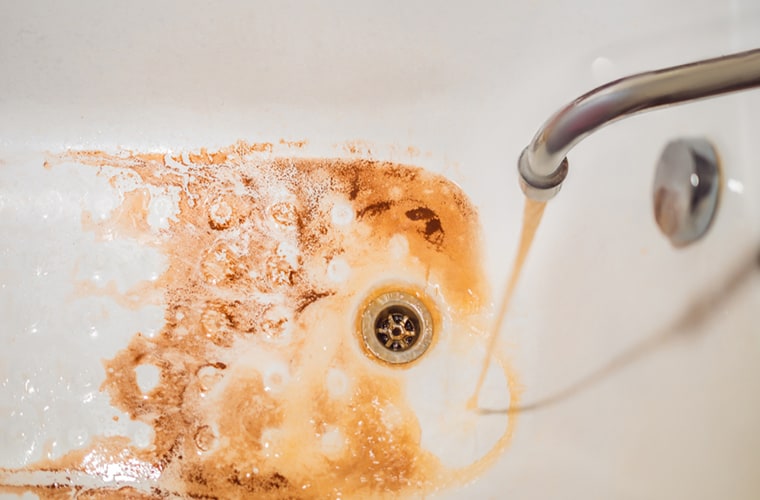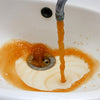IRON - Part 1
Let’s talk IRON
Iron is beneficial to humans and is a necessary nutrient in most diets. The US Environmental Protection Agency (EPA) does not consider elevated iron concentrations in drinking water to be a health problem. However, most people get their daily minerals and vitamins through the food they eat and not the water they consume. Remember, water is NOT a significant source of iron.
So, while iron is not a problem from a consumption standpoint, it can be very detrimental to everything your water touches. This includes pipes, faucets, fixtures, washing machines, dishwashers, showers, tubs, clothing, dishes, and silverware. Iron typically stains everything that it touches a brown, red, or yellow color (depending upon the level), and is known to clog or plug pipes, nozzles, faucet aerators, and affect household products such as dishwashers and washing machines. This leads to the need for iron removal solutions.
Where to start?
First, determine if the iron is in particle form (oxidized state) or dissolved (reduced state). Next, how does the water look when you first fill a glass? The color of the water is an initial clue as to the presence of oxidized iron. Iron, in an oxidized state, forms small "rust" particles that can give the water from a faucet a red, brown or yellow color. Oxidized iron needs to be removed with a sediment filter that will catch the small particles down to approximately five (5) microns before they pass into the home plumbing and/or other water conditioning equipment.
If you have dissolved iron, meaning you can’t see it in the water initially, it can become oxidized once it is exposed to oxygen in the air. Agitating the water or adding oxidants such as chlorine bleach and other home cleaners containing chlorine can accelerate this process. As the water becomes oxidized, it can build up the iron and cause staining in plumbing fixtures and clothes. For reference, the EPA has recommended that your water should contain no more than 0.3 parts per million (ppm or milligrams per liter [mg/L]) dissolved iron.
What to do if you suspect you have IRON - Laboratory Water Analysis
Before you start to consider what type of system you need to get all the information you can, which means you should get your water tested. This will indicate all the contaminants that you have in your water and let you know important information, such as if you have Iron Related Bacteria (IRB) or Sulfur Reducing Bacteria (SRB).
It is the best idea that you get a detailed water test from independent third-party laboratories that have no interest in selling equipment. Remember, if you have water treatment equipment already, bypass and get untreated samples to send to the lab. But, if you want to check if your system is working properly, you can always have a before and after sample tested.
When providing water treatment solutions, it is imperative that we know precisely what is in your water, including "competing contaminants”, so let the lab know what the test is for. That is the only way to know what kind of iron removal system should be used to solve your iron problem. If you have dissolved or "clear water" iron or even ferric iron, there are several treatment methods to consider. We will touch on this in an upcoming blog!















